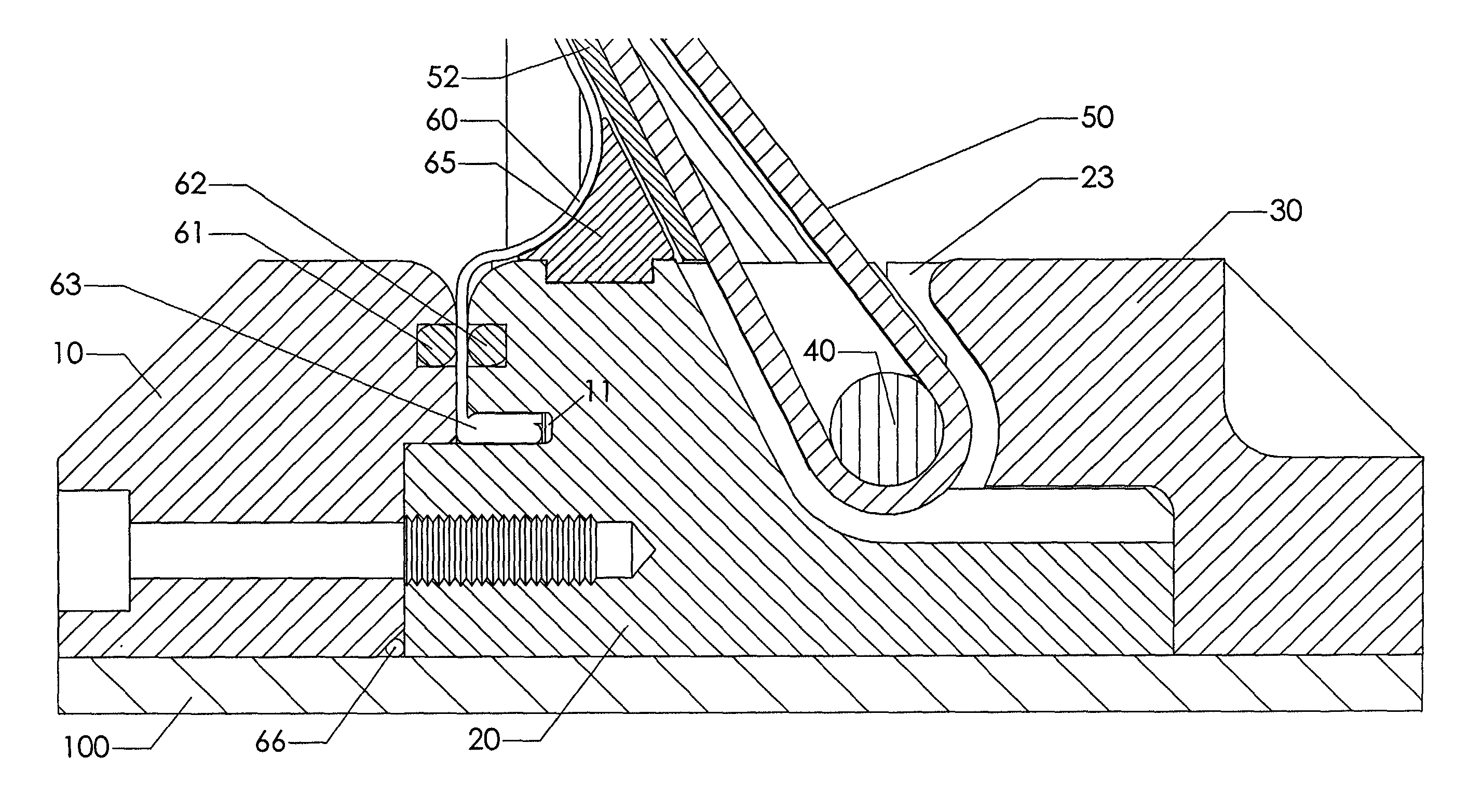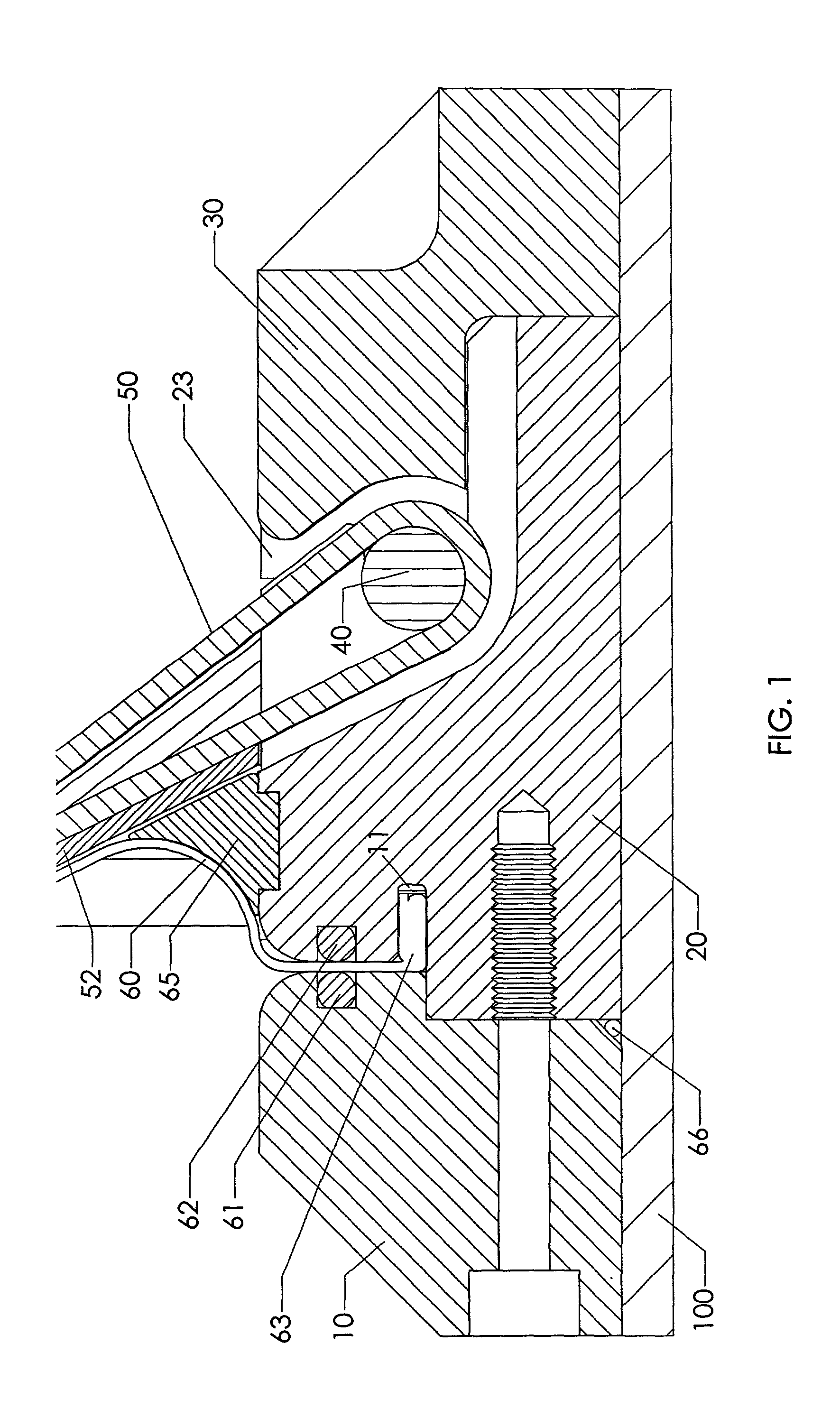Apparatus for sealing and restraining the flexible pressure boundary of an inflatable spacecraft
a flexible pressure boundary and spacecraft technology, applied in the field of seals and restraint systems, can solve the problems of inability to fully satisfy the requirements of internal pressure, lack of single material that has both the requisite gas impermeability and the strength needed to withstand internal pressure, and the connection of the gas membrane and the restraint layer to the rigid structural components of the spacecraft that has proved to be problematic, so as to minimize mechanical damage, minimize air leakage, and effect of air sealing
- Summary
- Abstract
- Description
- Claims
- Application Information
AI Technical Summary
Benefits of technology
Problems solved by technology
Method used
Image
Examples
Embodiment Construction
[0030]Preferred embodiments of the present invention that illustrate the best modes now contemplated for placing the invention in practice are described as follows, and in conjunction with the attached drawings that form a part of this specification. The preferred embodiments are described in detail without attempting to show all of the various forms and modifications in which the present invention may be embodied. The preferred embodiments described are illustrative, and as will become apparent to those skilled in the arts, can be modified in numerous ways within the spirit and scope of the invention, the invention being measured by the appended claims and not by the details of the specification.
[0031]The present invention is a restraint and sealing system for use in inflatable space structures that utilizes a flexible, non-rigid pressure boundary. Examples of the construction techniques utilized in the development of these inflatable space structures is provided in Deployable Luna...
PUM
 Login to View More
Login to View More Abstract
Description
Claims
Application Information
 Login to View More
Login to View More - R&D
- Intellectual Property
- Life Sciences
- Materials
- Tech Scout
- Unparalleled Data Quality
- Higher Quality Content
- 60% Fewer Hallucinations
Browse by: Latest US Patents, China's latest patents, Technical Efficacy Thesaurus, Application Domain, Technology Topic, Popular Technical Reports.
© 2025 PatSnap. All rights reserved.Legal|Privacy policy|Modern Slavery Act Transparency Statement|Sitemap|About US| Contact US: help@patsnap.com



